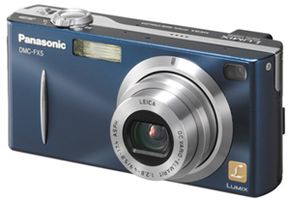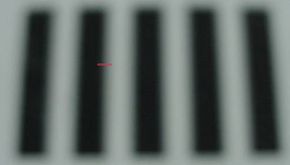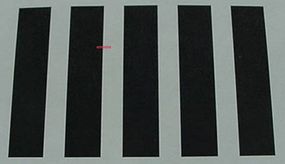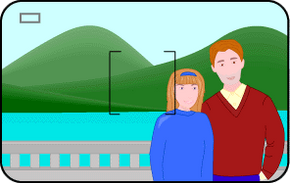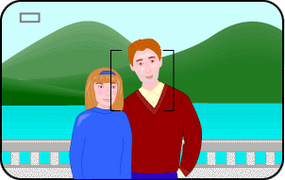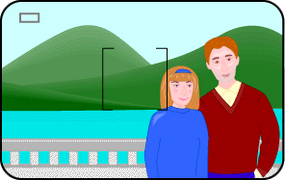In 1986, the Polaroid Corporation used a form of sound navigation ranging (SONAR), like a submarine uses underwater, to bounce a sound wave off the subject. The Polaroid camera used an ultra-high-frequency sound emitter and then listened for the echo (see How Radar Works for details). The Polaroid Spectra and later SX-70 models computed the amount of time it took for the reflected ultrasonic sound wave to reach the camera and then adjusted the lens position accordingly. This use of sound has its limitations -- for example, if you try taking a picture from inside a tour bus with the windows closed, the sound waves will bounce off of the window instead of the subject and so focus the lens incorrectly.
This Polaroid system is a classic active system. It is called "active" because the camera emits something (in this case, sound waves) in order to detect the distance of the subject from the camera.
Active autofocus on today's cameras uses an infrared signal instead of sound waves, and is great for subjects within 20 feet (6 m) or so of the camera. Infrared systems use a variety of techniques to judge the distance. Typical systems might use:
- Triangulation
- Amount of infrared light reflected from the subject
- Time
For example, this patent describes a system that reflects an infrared pulse of light off the subject and looks at the intensity of the reflected light to judge the distance. Infrared is active because the autofocus system is always sending out invisible infrared light energy in pulses when in focus mode.
It is not hard to imagine a system in which the camera sends out pulses of infrared light just like the Polaroid camera sends out pulses of sound. The subject reflects the invisible infrared light back to the camera, and the camera's microprocessor computes the time difference between the time the outbound infrared light pulses are sent and the inbound infrared pulses are received. Using this difference, the microprocessor circuit tells the focus motor which way to move the lens and how far to move it. This focus process repeats over and over while the camera user presses the shutter release button down half-way. The only difference between this system and the ultrasound system is the speed of the pulse. Ultrasound waves move at hundreds of miles per hour, while infrared waves move at hundreds of thousands of miles per second.
Infrared sensing can have problems. For example:
- A source of infrared light from an open flame (birthday cake candles, for instance) can confuse the infrared sensor.
- A black subject surface may absorb the outbound infrared beam.
- The infrared beam can bounce off of something in front of the subject rather than making it to the subject.
One advantage of an active autofocus system is that it works in the dark, making flash photography much easier.
On any camera using an infrared system, you can see both the infrared emitter and the receiver on the front of the camera, normally near the viewfinder.
To use infrared focusing effectively, be sure the emitter and the sensor have a clear path to and from your subject, and are not blocked by a nearby fence or bars at a zoo cage. If your subject is not exactly in the middle, the beam can go right past the subject and bounce off an undesired subject in the distance, so be sure the subject is centered. Very bright subjects or bright lights can make it difficult for the camera to "see" the reflected infrared beam -- avoid these subjects when possible.
This patent, this patent, and this patent each show a different form of infrared sensing.
